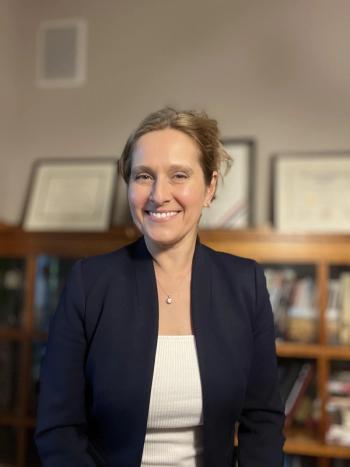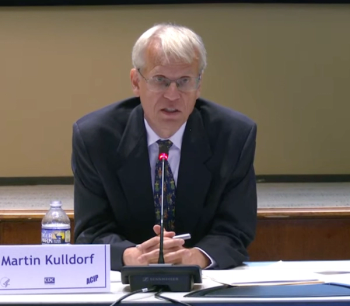
U.S. Supreme Court overturns Roe v Wade abortion ruling
Bans to take effect or likely in 26 states, according to reproductive rights group.
The
On June 24, the Supreme Court issued 213 pages with its ruling and opinions in the case known as Dobbs v. Jackson Women’s Health Organization, which the court heard on Dec. 1, 2021. The Supreme Court considered the state of Mississippi’s appeal of a lower court ruling that struck down as unconstitutional the state’s law banning abortion after 15 weeks of pregnancy, according to the
A summary in the ruling syllabus stated: “The Constitution does not confer a right to abortion; Roe and Casey are overruled; and the authority to regulate abortion is returned to the people and their elected representatives.”
The ruling also referred to the 1992 case Planned Parenthood of Southeastern Pa. v. Casey, another landmark case in U.S. abortion law.
“We hold that Roe and Casey must be overruled,” said the ruling, written by Justice Samuel A. Alito Jr. “The Constitution makes no reference to abortion, and no such right is implicitly protected by any constitutional provision, including the one on which the defenders of Roe and Casey now chiefly rely—the Due Process Clause of the Fourteenth Amendment.”
Citing case law, the draft ruling said the Due Process Clause “has been held to guarantee some rights that are not mentioned in the Constitution, but any such right must be ‘deeply rooted in this Nation’s history and tradition’ and ‘implicit in the concept of ordered liberty.’
“The right to abortion does not fall within this category,” the ruling said.
A 98-page draft by Alito circulated to fellow justices on Feb. 10. That document was leaked to the news site Politico, which published the ruling on May 2, sparking a firestorm of reaction and demonstrations from abortion supporters and opponents.
At the state level
Based on the ruling, at least half the 50 states are poised to ban abortion, according to CRR.
That organization called Dobbs v. Jackson Women’s Health “the most consequential abortion rights case in generations” and analyzed the various state laws that regulate abortion in the study,
CRR categorized the states, the District of Columbia and the five most populous U.S. territories in four ways, based on analysis of current laws in a post-Roe legal environment:
- Nine states are considered in the “expanded access” category, with abortion protected by state laws or constitutions, with other laws and policies for additional access to abortion care: California, Connecticut, Hawaii, Illinois, New Jersey, New York, Oregon, Vermont, and Washington
- 12 states and Washington, D.C., were considered “protected,” with abortion protected by state law, with limits on access to care: Alaska, Colorado, Delaware, the District of Columbia, Florida, Kansas, Maine, Maryland, Massachusetts, Minnesota, Montana, Nevada, and Rhode Island
- Three states and two territories are “not protected,” meaning abortion may continue to be accessible but would not be protected by state and district law: New Hampshire, New Mexico, Puerto Rico, U.S. Virgin Islands, and Virginia
- 26 states and three territories are “hostile,” meaning they could immediately ban abortion: Alabama, American Samoa, Arizona, Arkansas, Georgia, Guam, Idaho, Indiana, Iowa, Kentucky, Louisiana, Michigan, Mississippi, Missouri, Nebraska, North Carolina, North Dakota, the Northern Mariana Islands, Ohio, Oklahoma, Pennsylvania, South Carolina, South Dakota, Tennessee, Texas, Utah, West Virginia, Wisconsin, and Wyoming
Decline reversal
In 2020, there were 930,160 abortions in the United States, an 8% increase from 862,320 abortions in 2017, according to The Guttmacher Institute, which conducts three-year surveys of abortion providers.
That group said the figures showed a reversal of a long-term decline in U.S. abortions that began about 1990, but noted trends varied across states from 2017 to 2020 with “no clear patterns to explain why some had increases or decreases.”
The Guttmacher Institute map of states that will or are likely to ban abortion generally matched that of the Center for Reproductive Rights.
Physicians support Roe
Since the May 2 publication of the draft ruling, physicians groups have lined up in support of abortion rights, publishing statements and member advisories. June 24 was no different, with organizations using the social media site Twitter and their websites to rip the Supreme Court ruling for interfering with patient care.
American College of Physicians
American College of Physicians (ACP) President Ryan D. Mire, MD, FACP, said the group’s members are “greatly concerned” about eliminating a constitutional right for millions of Americans to make their own decisions about health care. ACP will continue to advocate for rights to reproductive services.
“ACP firmly
“With the final decision from the Supreme Court, access has already disappeared in the states with automatic bans on abortion, and it is likely to encourage other states to pass similarly restrictive policies. The decision is particularly concerning because it has the potential to be applied much more broadly than just to abortion services. Although the majority opinion states that the decision applies only to abortion, ACP is concerned that by eroding the constitutional right to privacy, the decision has the potential to restrict the ability of patients to access contraception or fertility treatments in some states, or to threaten other constitutional privacy protections.”
American Academy of Family Physicians
Physicians’ patients, not policy makers, must make their medical decisions, American Academy of Family Physicians President Sterling N. Ransone Jr., MD, FAAFP, said in a
“Patients must be able to
“Allowing each state to pass their own laws regarding access to reproductive health care, including abortion services and contraception, exacerbates inequities in the health care system,” Ransone said. “These laws disproportionately affect those patients who are in underrepresented groups and underserved areas, which already puts them at increased risk of maternal death. Decreased availability of care and increased travel and associated expenses will make seeking health care challenging for many and prohibitive for some.”
American Academy of Pediatrics
The court decision “carries grave consequences” for adolescent patients who already face more barriers to care than adults, American Academy of Pediatrics President Moira Szilagyi, MD, PhD, FAAP, said in a
“In the wake of this ruling, the AAP will continue to support our chapters as states consider policies affecting access to abortion care, and pediatricians will continue to support our patients,” Szilagyi said.
American Academy of Obstetricians and Gynecologists
When abortion is legal, it is safe, said a
“These oppressive laws will force many people to face the known risks associated with continuing a pregnancy, including potential pregnancy-related complications and worsening of existing health conditions, as well as the morbidity and mortality associated with childbirth,” Hoskins said. “The impact of this irresponsible decision will fall disproportionately on people who already face barriers accessing health care, including people of color, those living in rural areas, and those without ample financial resources. This decision, which has been foreshadowed for many months, confirms that this is a dark and dangerous time for the women and doctors of America.”
American Medical Association
The American Medical Association published notice of the policy adopted during its annual meeting earlier this month “recognizing that it is a violation of human rights when government intrudes into medicine and impedes access to safe, evidence-based reproductive health services, including abortion and contraception.”
“A growing number of current and pending laws insert government into the patient-physician relationship by dictating limits or bans on reproductive health services and while also aiming to criminally punish patients for their health decisions,” AMA President
From the bench
In the case, Alito wrote the opinion and was joined by Justices Clarence Thomas, Neil M. Gorsuch, Brett M. Kavanaugh and Amy Coney Barrett. Thomas and Kavanaugh filed concurring opinions, while Chief Justice John G. Roberts Jr., filed an opinion concurring in judgment. Justices Stephen G. Breyer, Sonia Sotomayor and Elena Kagan filed a dissenting opinion.
- From the concurring opinion by Thomas:
“That 50 years have passed since Roe and abortion advocates still cannot coherently articulate the right (or rights) at stake proves the obvious: The right to abortion is ultimately a policy goal in desperate search of a constitutional justification.”
- From the concurring opinion by Kavanaugh:
“To be sure, many Americans will disagree with the Court’s decision today. That would be true no matter how the Court decided this case. Both sides on the abortion issue believe sincerely and passionately in the rightness of their cause. Especially in those difficult and fraught circumstances, the Court must scrupulously adhere to the Constitution’s neutral position on the issue of abortion. …
“In my judgment, on the issue of abortion, the Constitution is neither pro-life nor pro-choice.The Constitution is neutral, and this Court likewise must be scrupulously neutral. The Court today properly heeds the constitutional principle of judicial neutrality and returns the issue of abortion to the people and their elected representatives in the democratic process.”
- From the concurring opinion by Roberts:
“The Court’s decision to overrule Roe and Casey is a serious jolt to the legal system—regardless of how you view those cases. A narrower decision rejecting the misguided viability line would be markedly less unsettling, and nothing more is needed to decide this case. …
“Both the Court’s opinion and the dissent display a relentless freedom from doubt on the legal issue that I cannot share. I am not sure, for example, that a ban on terminating a pregnancy from the moment of conception must be treated the same under the Constitution as a ban after fifteen weeks. A thoughtful Member of this Court once counseled that the difficulty of a question ‘admonishes us to observe the wise limitations on our function and to confine ourselves to deciding only what is necessary to the disposition of the immediate case.’ … I would decide the question we granted review to answer—whether the previously recognized abortion right bars all abortion restrictions prior to viability, such that a ban on abortions after fifteen weeks of pregnancy is necessarily unlawful. The answer to that question is no, and there is no need to go further to decide this case.”
- From the dissenting opinion by Breyer, Sotomayor and Kagan:
“Whatever the exact scope of the coming laws, one result of today’s decision is certain: the curtailment of women’s rights, and of their status as free and equal citizens.Yesterday, the Constitution guaranteed that a woman confronted with an unplanned pregnancy could (within reasonable limits) make her own decision about whether to bear a child, with all the life-transforming consequences that act involves. And in thus safeguarding each woman’s reproductive freedom, the Constitution also protected ‘[t]he ability of women to participate equally in [this nation’s] economic and social life.'… But no longer. As of today, this Court holds, a state can always force a woman to give birth, prohibiting even the earliest abortions. A state can thus transform what, when freely undertaken, is a wonder into what, when forced, may be a nightmare.”
Newsletter
Stay informed and empowered with Medical Economics enewsletter, delivering expert insights, financial strategies, practice management tips and technology trends — tailored for today’s physicians.















